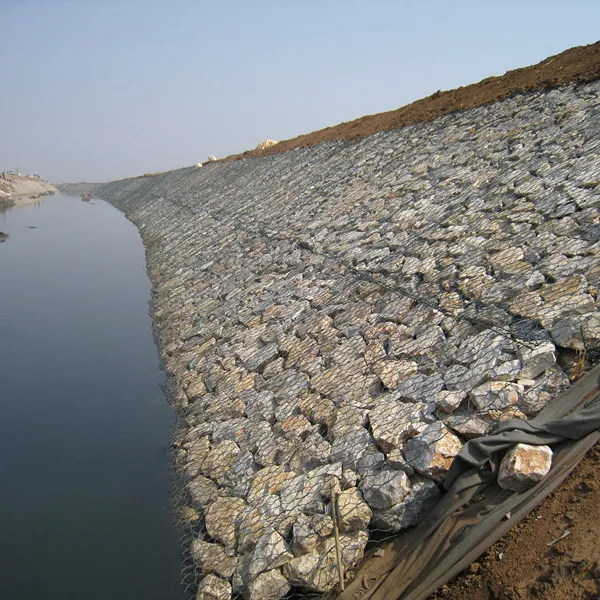ಡಿಸೆ . 30, 2024 16:52 ಪಟ್ಟಿಗೆ ಹಿಂತಿರುಗಿ
Application of Gabion Box in the field of architecture
ಗೇಬಿಯನ್ ಬಾಕ್ಸ್, as an innovative building material, has been widely used in the field of architecture in recent years. The cage like structure woven from high-strength steel wire and filled with natural stone not only has excellent mechanical properties and durability, but also performs well in environmental protection and aesthetics. This article will explore the main applications and advantages of gabion mesh in the field of construction.

The application of gabion boxes in enclosure structures is particularly prominent
In urban construction, walls and retaining walls are very important structures. Although traditional concrete walls are stable, they often appear inadequate in terms of aesthetics and environmental adaptability. The use of gabion fences can effectively solve this problem. Due to its natural appearance and rich layers, it can blend well into the surrounding environment and reduce damage to the natural landscape. In addition, the permeability of gabion walls is better than that of concrete, which helps reduce the risk of urban waterlogging caused by rainwater runoff and enhances the ecological resilience of the city.
Gabion boxes also play an important role in flood control and soil and water conservation projects
By setting up gabion nets in areas such as streams, riverbanks, and steep slopes, it is possible to effectively prevent soil erosion and ensure the stability of the land. During floods, gabion basket walls can effectively absorb the impact of water flow, reduce riverbank erosion, and maintain the ecological balance of the river channel. This advantage makes gabion mesh an important component of flood control engineering and has been widely used.
Gabion boxes are also used in commercial architecture and landscape design
Gabion fence posts can be used as basic materials for landscape ornaments, chairs, flower beds, etc. in garden landscape and park construction, which not only improves the flexibility of design, but also highlights the combination of nature and craftsmanship. Through reasonable design and layout, gabion nets can create diverse landscape effects, making buildings more harmonious and unified with the natural environment.
The ease of construction of gabion boxes is also one of the important reasons for their popularity in the field of architecture
Compared with traditional materials, the assembly process of gabion mesh is relatively simple, does not require complex mechanical operations, and can be completed in a short period of time. This not only improves the efficiency of the project, but also effectively reduces construction costs. For some projects with large engineering quantities, the economic practicality of gabion mesh is particularly prominent.
In summary, gabion bench, as an emerging building material, has demonstrated significant advantages in various applications such as enclosure structures, flood control, and landscape beautification. The sturdiness of its structure, adaptability to ecology, and convenience of construction make gabion mesh have broad prospects in the future construction market. Faced with the increasing demand for environmental protection and the acceleration of urbanization, gabion mesh is undoubtedly an ideal material worth promoting and applying. Through further research and innovation, gabion mesh will demonstrate greater potential and value in the field of construction.
-
Visualizing Gabion 3D Integration in Urban Landscapes with Rendering
ಸುದ್ದಿJul.23,2025
-
The Design and Sustainability of Gabion Wire Mesh Panels
ಸುದ್ದಿJul.23,2025
-
The Acoustic Performance of Gabion Sound Barriers in Urban Environments
ಸುದ್ದಿJul.23,2025
-
Mastering the Installation of Galvanized Gabion Structures
ಸುದ್ದಿJul.23,2025
-
Gabion Boxes: Pioneering Sustainable Infrastructure Across the Globe
ಸುದ್ದಿJul.23,2025
-
Custom PVC Coated Gabion Boxes for Aesthetic Excellence
ಸುದ್ದಿJul.23,2025
-
Installation Tips for Gabion Wire Baskets in Erosion Control Projects
ಸುದ್ದಿJul.21,2025






